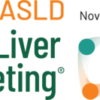Your liver helps clean your blood, digest food, and store sugar that your body uses for energy. Typically, its cells chug along doing their job until they wear out or get damaged. Then they die and new ones take their place. It’s all very orderly. But when you have primary liver cancer, those cells grow at a pace that’s out of control. Cancer cells start to take over and make it hard for your normal cells to do their job. Primary means the cancer starts in your liver. If it starts somewhere else and spreads to your liver, it’s called secondary liver cancer, and it’s treated differently.
Patient Organization for Hepatocellular Carcinoma
Hepatocellular cancer (HCC) is by far the most common type of cancer that starts in the liver. Most people who get it also have an ongoing (or “chronic”) liver disease, such as cirrhosis. It’s found more often in men than women.
Patient Organizations for Intra-hepatic Cholangiocarcinoma
Cholangiocarcinoma is a heteregeneous group of cancers that develop from biliary conduct cells (cholangiocytes). They are primitive liver cancers. It is now described that chronic liver diseases are risk factors for these types of cancers. However, cholangiocarcinoma may also develop from healthy livers, contrarily to hepatocellular carcinoma.
Patient Organizations for Pancreatic Cancer
Pancreatic cancer is the 12th most commonly occurring cancer in men and the 11th most commonly occurring cancer in women. There were 460,000 new cases in 2018. Pancreatic tumors are either exocrine or neuroendocrine (endocrine) tumors, based on the type of cell they start in. Knowing the type of tumor is important because each type acts differently and responds to different treatments. About 93 percent of pancreatic cancers are exocrine tumors. The most common type of pancreatic cancer is adenocarcinoma.
- Pancreatic Cancer Action Network
- National Pancreatic Cancer Foundation
- Association Française pour la Recherche sur le Pancréas
Patient Organizations for Colorectal Cancer
Colorectal cancer is the third most commonly occurring cancer in men and the second most commonly occurring cancer in women. Colorectal cancer is considered one of the clearest markers of epidemiological and nutritional transition, with incidence rates of this cancer – together with other cancers linked to Western lifestyles – increasing as previous high rates of infection-related cancers decline in countries that are undergoing rapid societal and economic changes.







